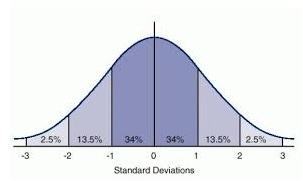
LEOV Word Problems Topic Practice #2
Quiz
•
Mathematics
•
9th - 10th Grade
•
Easy

Matthew Kilgore
Used 6+ times
FREE Resource
29 questions
Show all answers
1.
MULTIPLE CHOICE QUESTION
30 sec • 1 pt
Save your answer to this problem, you will need it for the next one!
At Barton High School this year, 45 students are taking Japanese. That number has been increasing at a rate of 3 students per year. The number of Barton students who are taking German this year was 108, and this number has been decreasing at a rate of 4 students per year.
Assuming this trend continues, which of the equations below could help you find how many years it will take before the number of students taking Japanese equals the number taking German?
2.
FILL IN THE BLANK QUESTION
1 min • 1 pt
Solve the equation you found in the previous problem. Assume that “this year” refers to 2013. In what year will the number of Barton students taking Japanese equal those taking German? [Hint: Read this question carefully. The final answer is not “9”]
3.
FILL IN THE BLANK QUESTION
1 min • 1 pt
The next set of questions will use the following information, so write it down carefully: A herd of elephants began moving at a speed of 6 miles per hour. One lone elephant stayed behind. Two hours later, it decided to catch up with the herd and began moving at a speed of 10 miles per hour.
Let "t" = time that has passed the herd started moving.
Type "done" in the box below when you have copied this information.
4.
MULTIPLE CHOICE QUESTION
30 sec • 1 pt
Which of these expressions correctly represents the time that has passed since the lone elephant started moving?
5.
MULTIPLE CHOICE QUESTION
30 sec • 1 pt
Save your answer to this problem, you will need it for the next one!
Use your answer to the previous problem. Which of these equations could help you find how long it took the long elephant to catch up to the herd?
6.
FILL IN THE BLANK QUESTION
1 min • 1 pt
Solve the equation you found in the previous problem to answer the following: For how long has the herd been moving when the loan elephant catches up to it?
7.
FILL IN THE BLANK QUESTION
1 min • 1 pt
How long has the lone elephant been moving when it catches up with the herd?
Create a free account and access millions of resources
Similar Resources on Wayground

30 questions
One-Variable Linear Expressions
Quiz
•
9th Grade

30 questions
Solving Single Variable Linear Equations
Quiz
•
9th Grade

24 questions
Geometry Chapter 10 - Circles
Quiz
•
9th - 10th Grade

25 questions
Scientific Notation Quiz
Quiz
•
7th - 9th Grade

25 questions
solving compound inequalities
Quiz
•
9th Grade

24 questions
Solving Inequalities in One Variable
Quiz
•
9th - 10th Grade

25 questions
Absolute value inequalities and graphs
Quiz
•
10th - 12th Grade

30 questions
Linear Equations One Variable
Quiz
•
9th Grade
Popular Resources on Wayground

55 questions
CHS Student Handbook 25-26
Quiz
•
9th Grade

10 questions
Afterschool Activities & Sports
Quiz
•
6th - 8th Grade

15 questions
PRIDE
Quiz
•
6th - 8th Grade

15 questions
Cool Tool:Chromebook
Quiz
•
6th - 8th Grade

10 questions
Lab Safety Procedures and Guidelines
Interactive video
•
6th - 10th Grade

10 questions
Nouns, nouns, nouns
Quiz
•
3rd Grade

20 questions
Bullying
Quiz
•
7th Grade

18 questions
7SS - 30a - Budgeting
Quiz
•
6th - 8th Grade
Discover more resources for Mathematics

14 questions
Points, Lines, Planes
Quiz
•
9th Grade

20 questions
Order of Operations
Quiz
•
9th Grade

19 questions
Order of Operations
Quiz
•
9th Grade

10 questions
Segment Addition Postulate Introduction
Quiz
•
9th - 10th Grade

20 questions
Algebra 1 Review
Quiz
•
9th Grade

20 questions
Combining Like Terms
Quiz
•
9th Grade

15 questions
Two Step Equations
Quiz
•
9th Grade

16 questions
Segment Addition Postulate
Quiz
•
10th Grade
